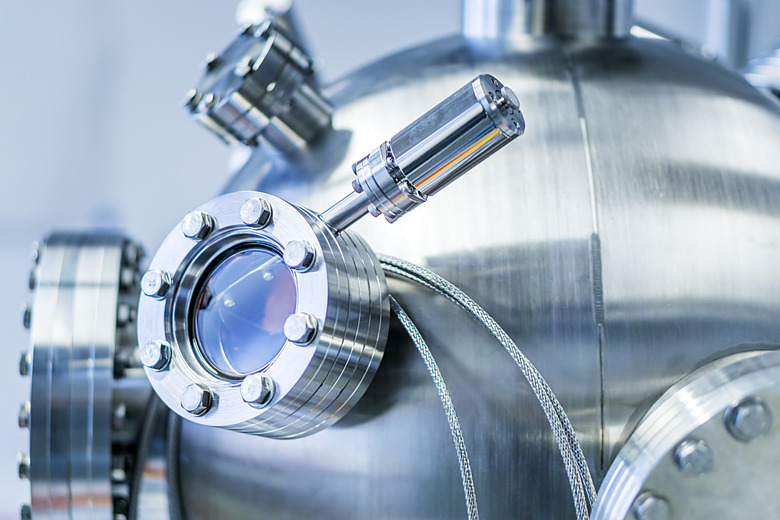How To Make A Vacuum Chamber For A Science Experiment
A vacuum chamber, a hard enclosure with all the air and other gasses removed by vacuum pump, creates an environment in which normal atmospheric pressure does not exist. The low-pressure condition left in the enclosure is referred to as a vacuum. Professional research demands a sophisticated form of vacuum chamber often custom-built to certain specifications. However, for classroom or at-home experiments, you can construct a vacuum chamber using a Mason jar.
Step 1
Cut a hole in the Mason jar lid with the pinking shears. Make it just big enough to fit the rubber stopper. Insert the rubber stopper into the top of the jar.
Step 2
Punch a hole through the rubber stopper using an awl or screwdriver. Hollow out the stopper until you have a hole just large enough to insert the nozzle of the vacuum pump.
Step 3
Squeeze fast-acting adhesive glue continuously along and inside the gap between the rubber stopper and the Mason jar lid to form an airtight seal. Place the item or substance being experimented on into the jar. Screw the top on tightly.
Step 4
Place the nozzle of the vacuum pump into the jar through the stopper. Suck the air from the jar using the pump.
Things Needed
- Mason jar
- Pinking shears or tin snips
- Rubber stopper
- Awl or screwdriver
- Fast-acting adhesive glue
- Vacuum pump
TL;DR (Too Long; Didn't Read)
Bell jars or Mason jars are generally used for classroom experiments or by hobbyists who need only a low-quality vacuum. Many retailers, both online and brick-and-mortar, sell low-cost, high-quality vacuum pumps and chambers that can be far more reliable and safe than constructing one yourself. Several tests can be completed in a chamber with an effective pump and low leakage rate.
Warning
A vacuum chamber is a hazardous environment. It can be fun to make candy explode, but never put anything alive in the chamber.
Cite This Article
MLA
McKeon, Payton R.. "How To Make A Vacuum Chamber For A Science Experiment" sciencing.com, https://www.sciencing.com/make-vacuum-chamber-science-experiment-12059805/. 15 September 2011.
APA
McKeon, Payton R.. (2011, September 15). How To Make A Vacuum Chamber For A Science Experiment. sciencing.com. Retrieved from https://www.sciencing.com/make-vacuum-chamber-science-experiment-12059805/
Chicago
McKeon, Payton R.. How To Make A Vacuum Chamber For A Science Experiment last modified August 30, 2022. https://www.sciencing.com/make-vacuum-chamber-science-experiment-12059805/
